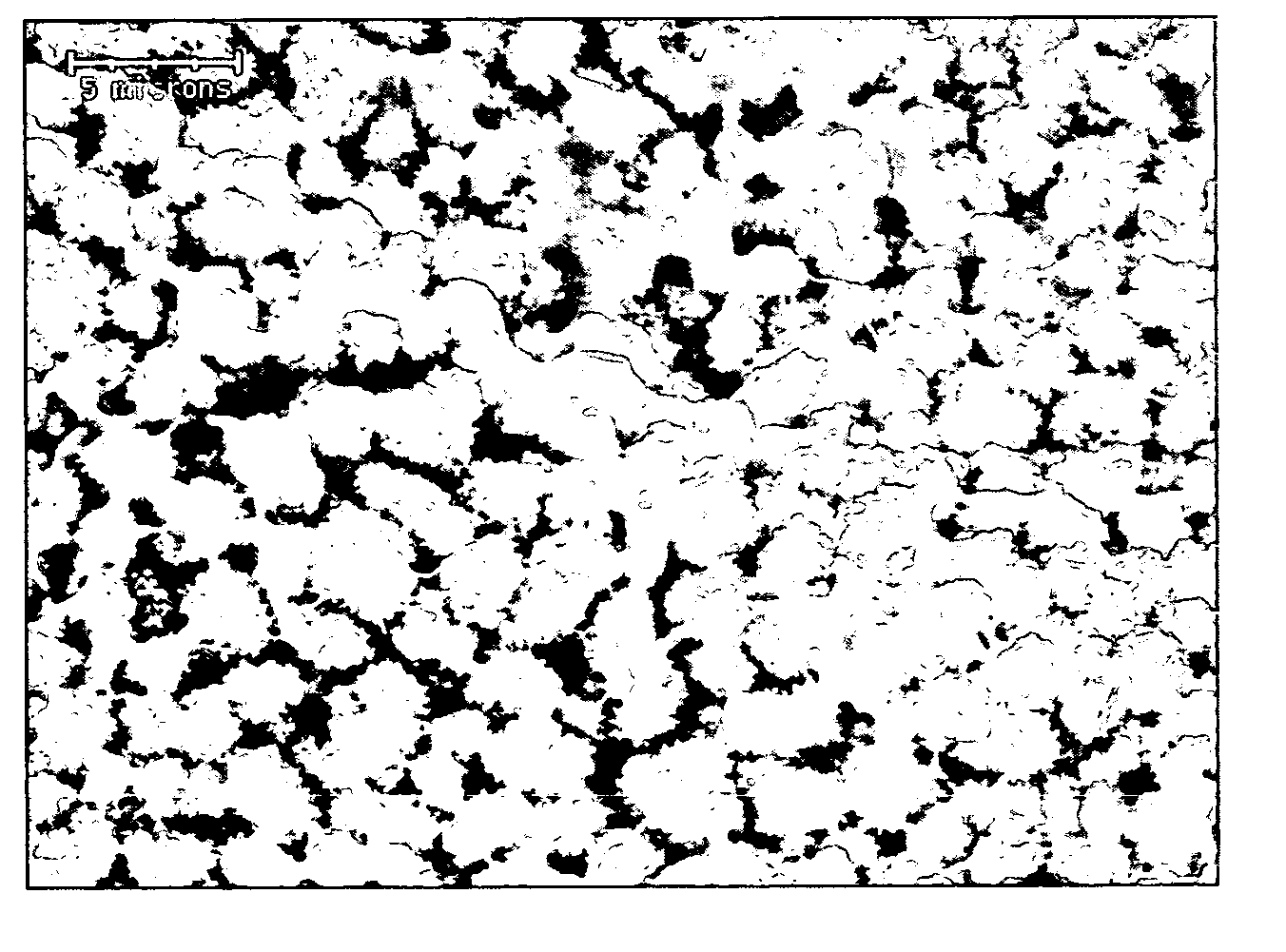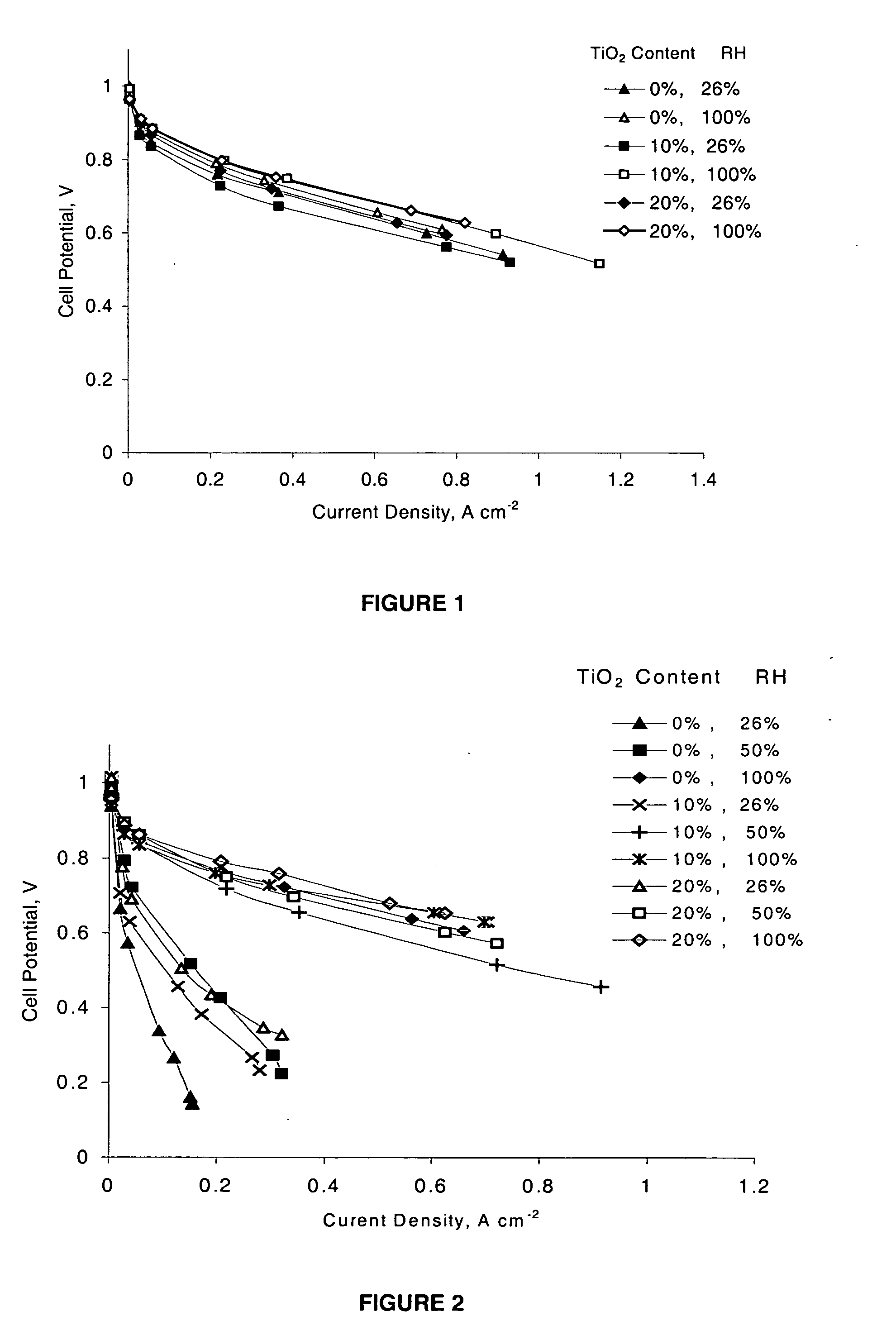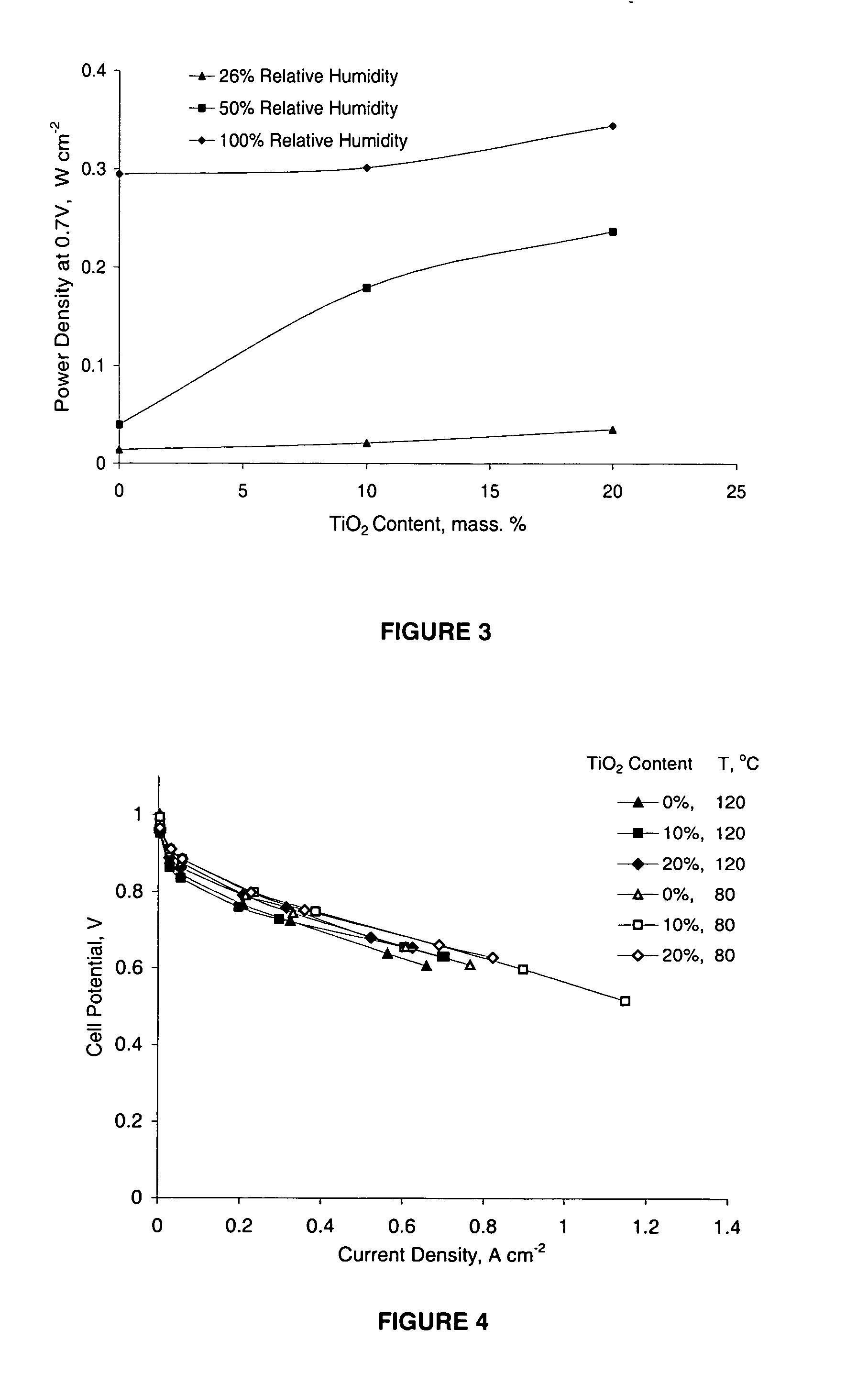Composite membrane for fuel cell and fuel cells incorporating said membranes
a fuel cell and composite membrane technology, applied in the field of fuel cells, can solve the problems of reducing the efficiency of cells, reducing the conductivity of proton, and reducing the hydration
- Summary
- Abstract
- Description
- Claims
- Application Information
AI Technical Summary
Benefits of technology
Problems solved by technology
Method used
Image
Examples
example 1
[0153] One TiO2 powder used is pure crystalline rutile (α-TiO2) obtained from Kronos, Inc. (Kronos 4020). The powder is sorted, cleaned, and characterized at the Oak Ridge National Laboratory as described in detail in M. V. Fedkin, X. Y. Zhou, J. D. Kubicki, A. V. Bandura, S. N. Lvov, M. L. Machesky, and D. J. Wesolowski, Langmuir, 19, 3797 (2003). The resulting TiO2 material contains no detectable crystalline contaminants and mainly consists of 3-50 μm aggregates of anhedral or subhedral 0.1-1.0 μm rutile grains. The specific surface area of the powder is determined by BET multipoint N2 surface area analysis as 2.914±0.004 m2·g−1. (see M. V. Fedkin, X. Y. Zhou, J. D. Kubicki, A. V. Bandura, S. N. Lvov, M. L. Machesky, and D. J. Wesolowski, Langmuir, 19, 3797 (2003).
example 2
[0154] Composite Nafion / TiO2 membranes are prepared using a recast procedure for the preparation of composite Nafion / SiO2 membranes. Appropriate amounts of commercial 5% Nafion solution (Aldrich) and TiO2 powder are mixed and sonicated in an ultrasonic bath. The suspension is cast and heated at 80° C. until dry. The recast composite films are then hot-pressed at a low pressure (less than 2 bars) at 150° C. for 10 minutes. The thickness of the membranes is about 80 microns. The membranes are purified using a standard procedure described in A. Ticianelli, C. R. Derouin, A. Redondo, and S. Srinivasan, J. Electrochem. Soc., 135, 2209 (1998). Nafion-based composite membranes, containing 0, 10, and 20 mass % TiO2, are prepared.
example 3
[0155] Membrane-electrode assemblies (MEAs) are prepared using a commercial gas diffusion solid polymer electrolyte electrode of Los Alamos type (ELAT) with double sided coatings. Electrode specifications are as follows: Pt loading 0.5 mg×cm-2 with 20% Pt on Vulcan XC-72 as a catalyst, Nafion loading 0.8 mg×cm-2, and standard PTFE loading. MEAs are prepared by pressing the electrodes onto the membrane in a Carver hot press at 130° C. and 50 bar for 40 seconds.
PUM
| Property | Measurement | Unit |
|---|---|---|
| size | aaaaa | aaaaa |
| zeta potential | aaaaa | aaaaa |
| size | aaaaa | aaaaa |
Abstract
Description
Claims
Application Information
 Login to View More
Login to View More - R&D
- Intellectual Property
- Life Sciences
- Materials
- Tech Scout
- Unparalleled Data Quality
- Higher Quality Content
- 60% Fewer Hallucinations
Browse by: Latest US Patents, China's latest patents, Technical Efficacy Thesaurus, Application Domain, Technology Topic, Popular Technical Reports.
© 2025 PatSnap. All rights reserved.Legal|Privacy policy|Modern Slavery Act Transparency Statement|Sitemap|About US| Contact US: help@patsnap.com



